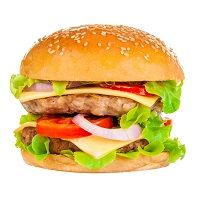Article
The Effects of Dietary Fat and Carbohydrate on Metabolic Health
Author(s):
A new meta-analysis of 102 randomized controlled diet trials found that consumption of polyunsaturated fat instead of carbohydrate or saturated fat reduces blood sugar levels and insulin resistance while also increasing the body’s ability to make insulin.

A new meta-analysis of 102 randomized controlled diet trials found that consumption of polyunsaturated fat instead of carbohydrate or saturated fat reduces blood sugar levels and insulin resistance while also increasing the body’s ability to make insulin.
Investigators searched for all randomized controlled diet trials that provided adult patients (aged ≥ 18 years) with actual meals (rather than meal replacements or instructions on how to feed themselves), calculated the macronutrient contents of each meal and then tracked blood glucose, insulin, HbA1c, insulin sensitivity, and insulin secretion.
The investigators then used multiple-treatment meta-regression — adjusted for the consumption of protein, trans fat and dietary fiber — to estimate the dose-response effects of substituting saturated fats, monounsaturated fats and polyunsaturated fats for carbohydrates on a calorie-for-calorie basis.
In all, the included trials measured the effect of 239 diets on 4,220 patients. The subsequent analysis found that replacing carbohydrate equal to 5% of a patient’s total daily calorie intake with a calorically-equivalent amount of saturated fat had no significant effect on fasting glucose (+0.02 mmol/L; 95% confidence interval [CI], -0.01 to 0.04; n trials = 99), but lowered fasting insulin (-1.1 pmol/L; 95% CI, -1.7 to -0.5; n = 90).
Replacing those carbohydrates with monounsaturated fats lowered HbA1c (-0.09%; 95% CI, -0.12% to -0.05%; n = 23), 2-hour post-challenge insulin (-20.3 pmol/L; 95% CI, -32.2 to -8.4; n = 11), and homeostasis model assessment for insulin resistance (HOMA-IR) (-2.4%; 95% CI, -4.6% to -0.3%; n = 30). Replacing those calories with polyunsaturated fats lowered HbA1c (-0.11%; 95% CI, -0.17% to -0.05%) and fasting insulin (-1.6 pmol/L; 95% CI, -2.8 to -0.4).
The investigators then calculated the effect of replacing an amount of saturated fat equal to 5% of each patient’s daily caloric intake with an equal amount of polyunsaturated fat and found that the swap significantly reduced glucose, HbA1c, C-peptide, and HOMA-IR.
Data from 10 trials with good measures of acute insulin response also showed that substituting polyunsaturated fat for carbohydrate, saturated fat or monounsaturated fat significantly improved insulin secretion capacity (+0.5 pmol/L/min; 95% CI, 0.2 to 0.8).
“The magnitudes of the observed effects deserve consideration. For example, for each 5% energy of increased monounsaturated fat or polyunsaturated fat, HbA1c improved by approximately 0.1%. Based on the relationship between HbA1c and clinical events, a 0.1% reduction would be estimated to reduce the incidence of type 2 diabetes by 22.0% (95% CI, 15.9% to 28.4%) and cardiovascular diseases by 6.8% (95% CI, 1.3% to 13.0%). Such an effect could clearly be clinically meaningful, especially given the current global pandemic of type 2 diabetes,” the study authors wrote in PLOS Medicine.
Although they noted several limitations to their work — including the small number of trials for some outcome measures and the possibility of issues with blinding, publication bias or trial patient compliance — those authors believe their work to be the most robust analysis ever done on the effect of macronutrients on insulin and blood sugar.
“These finding support increased consumption of vegetable oils and spreads, nuts, fish, and vegetables rich in unsaturated fats (e.g., avocado), in place of either animal fats or refined grains, starches, and sugars,” they wrote.




